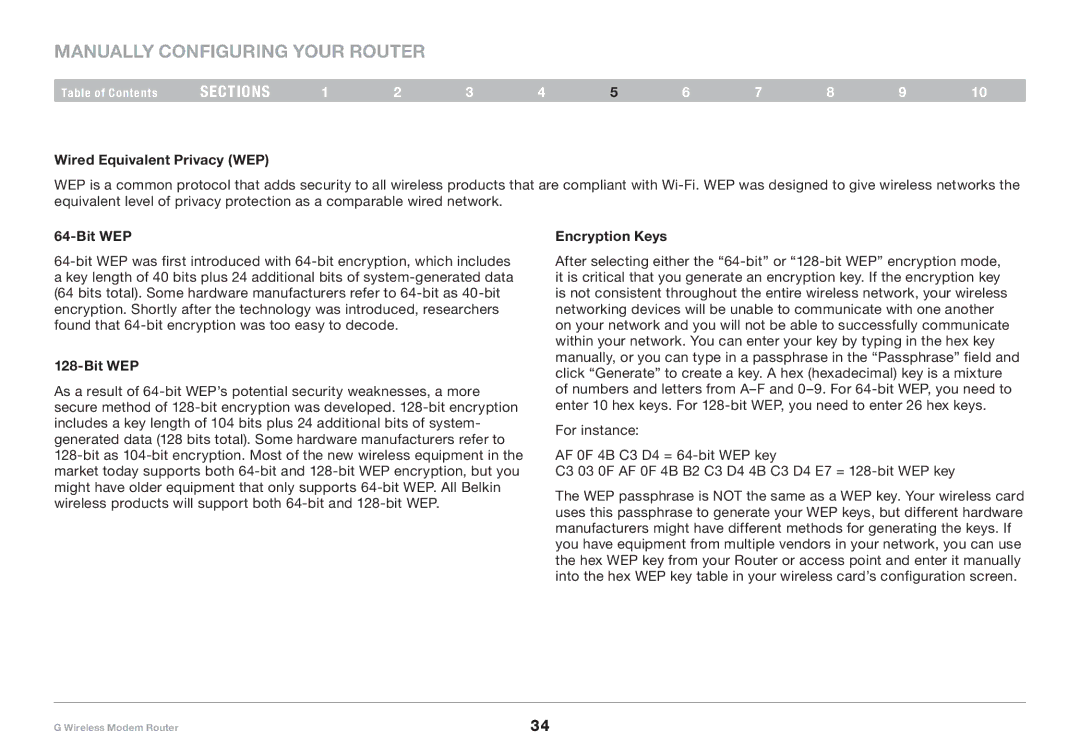Manually Configuring your Router
Table of Contents | sections | 1 | 2 | 3 | 4 | 5 | 6 | 7 | 8 | 9 | 10 |
Wired Equivalent Privacy (WEP)
WEP is a common protocol that adds security to all wireless products that are compliant with
64-Bit WEP
As a result of
Encryption Keys
After selecting either the
For instance:
AF 0F 4B C3 D4 =
C3 03 0F AF 0F 4B B2 C3 D4 4B C3 D4 E7 =
The WEP passphrase is NOT the same as a WEP key. Your wireless card uses this passphrase to generate your WEP keys, but different hardware manufacturers might have different methods for generating the keys. If you have equipment from multiple vendors in your network, you can use the hex WEP key from your Router or access point and enter it manually into the hex WEP key table in your wireless card’s configuration screen.
G Wireless Modem Router | 34 |
